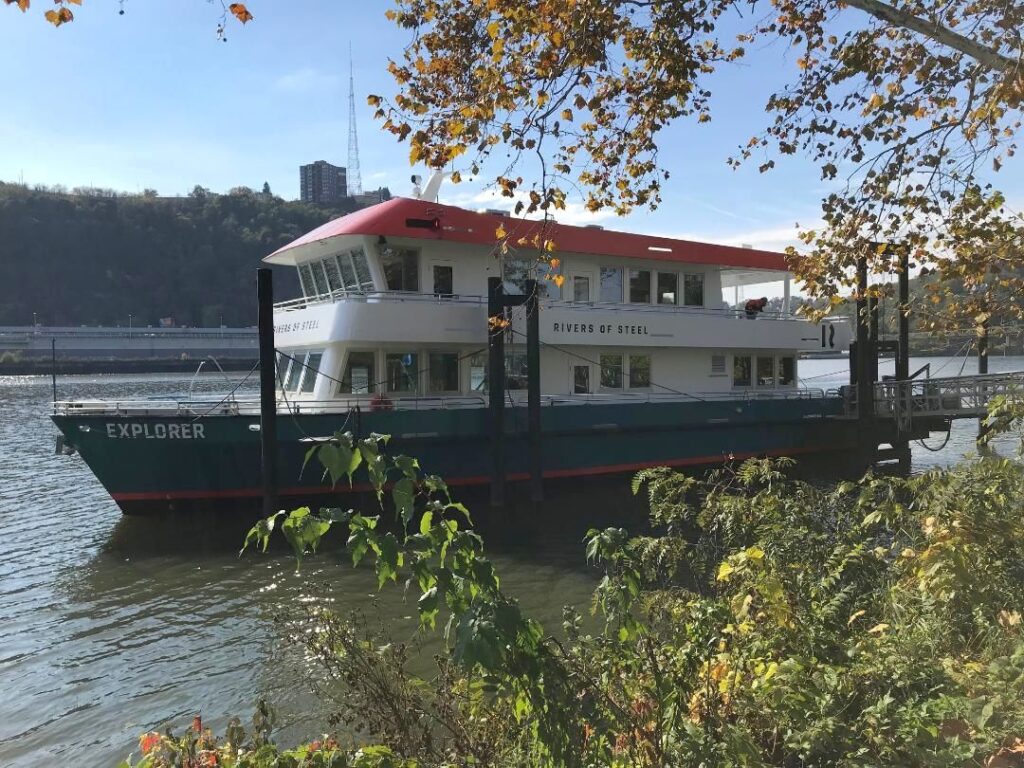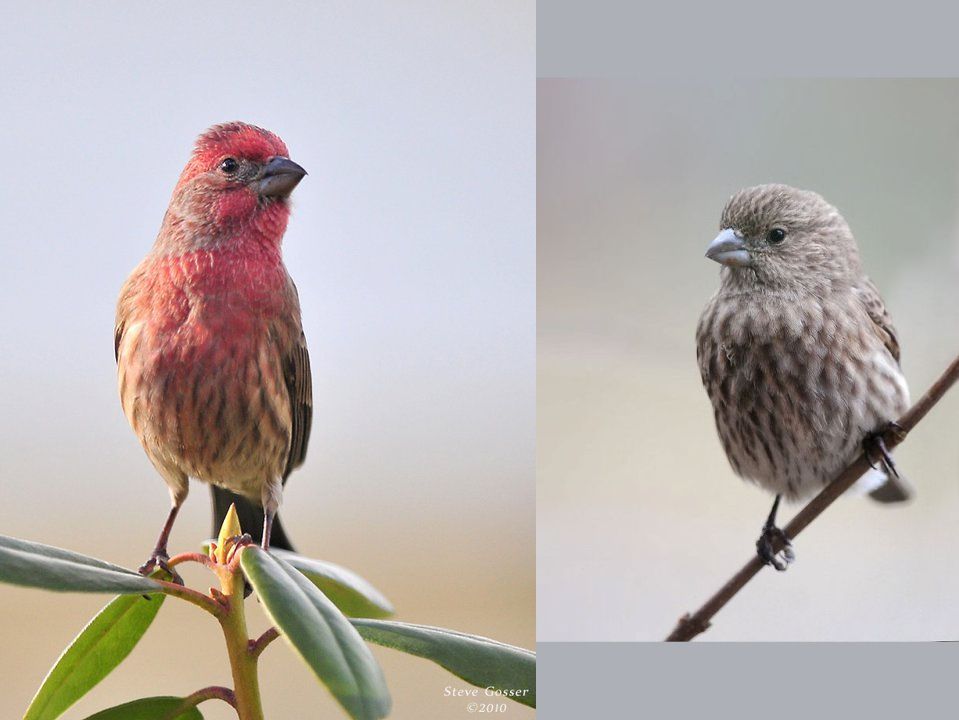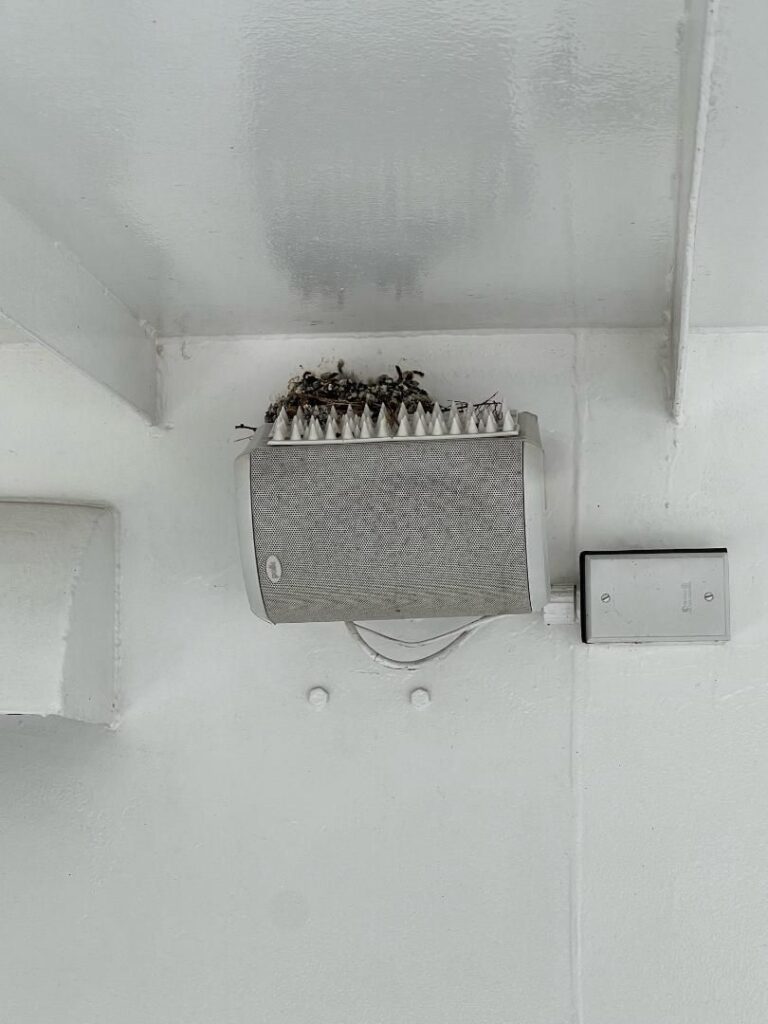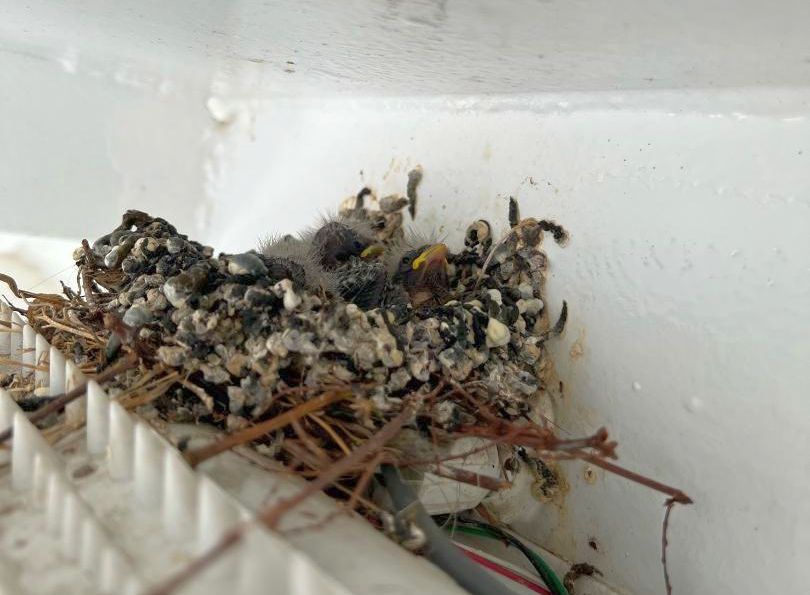
3 August 2022
What do you do when your nest and babies sail away without you? A house finch couple on Pittsburgh’s North Shore have learned to wait for the boat to come home.

This spring a pair of house finches (Haemorhous mexicanus) were very quick to build a nest atop a loud speaker on the aft deck of the Rivers of Steel Explorer, docked behind the Carnegie Science Center. By the time the crew caught up with them the female had finished the nest and laid eggs, so the nest had to remain undisturbed until it was empty.

When would it be empty? Not yet. In August? In September?
House finches are masters at back-to-back nesting, raising three to six broods per year. As the young approach fledging the male takes charge of them while the female starts the next round of egg laying. On the Explorer the female doesn’t pause between one brood and the next.
When I met the Explorer finch family on 26 July they had already raised several broods and were caring for young approximately two days old. While our tour waited on deck for the boat to depart the father fed three tiny nestlings. They are growing fast! Here they are three days later on 29 July.

Our tour pulled away from the dock and I forgot about the house finches for 90 minutes while we traveled Pittsburgh’s three rivers. Mother and father house finch were absent but they had not forgotten. Waiting on shore they were so attuned to the habits of the Explorer that when the vessel maneuvered to dock they raced across the channel to the aft deck. “The kids are home!”
The Traveling Nest is one of many birding highlights on Rivers of Steel Explorer tours. Captain Ryan O’Rourke explained, “In addition to hosting a bird-watching cruise with the National Aviary, part of our educational program for students includes a lesson in birding and how birds can be indicators of the health of our rivers.”
And then there are rare birds that the Explorer is first to see. On 26 April 2022 O’Rourke reported 13 American avocets on the Monongahela River at Station Square. I chased these birds and missed them. Wish I’d been on the boat!
Next month you can join Rivers of Steel and the National Aviary for Riverboat Birding on the Explorer, 3 September 2022. Sign up below or click here.
(photos by Ryan O’Rourke and Steve Gosser)
This is so cool Kate! What a fun day. Love the post, thank you.
Hard to tell but what is the nest made out of?
I can’t see it either but here’s what Birds of the World has to say: House finch nests are composed of fine weed and grass stems, leaves, rootlets, thin twigs, string, wool and feathers, with similar but finer materials as lining. In urban areas, twine, string, paper, dog and horse hair, cellophane and especially cigarette filters are commonly used in nest lining.
Note that only the female builds the nest. The male helps by bringing supplies but she rarely uses them.